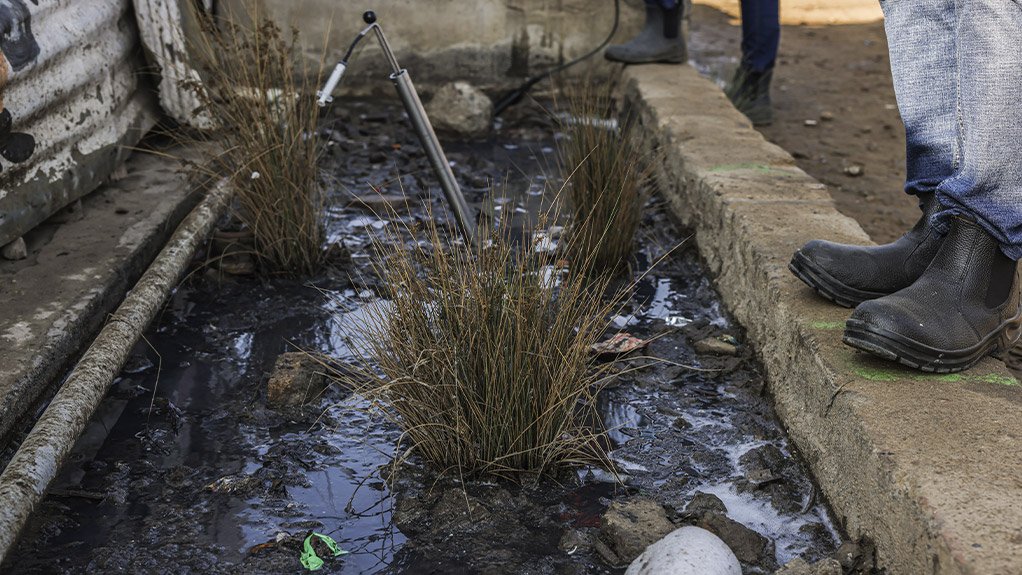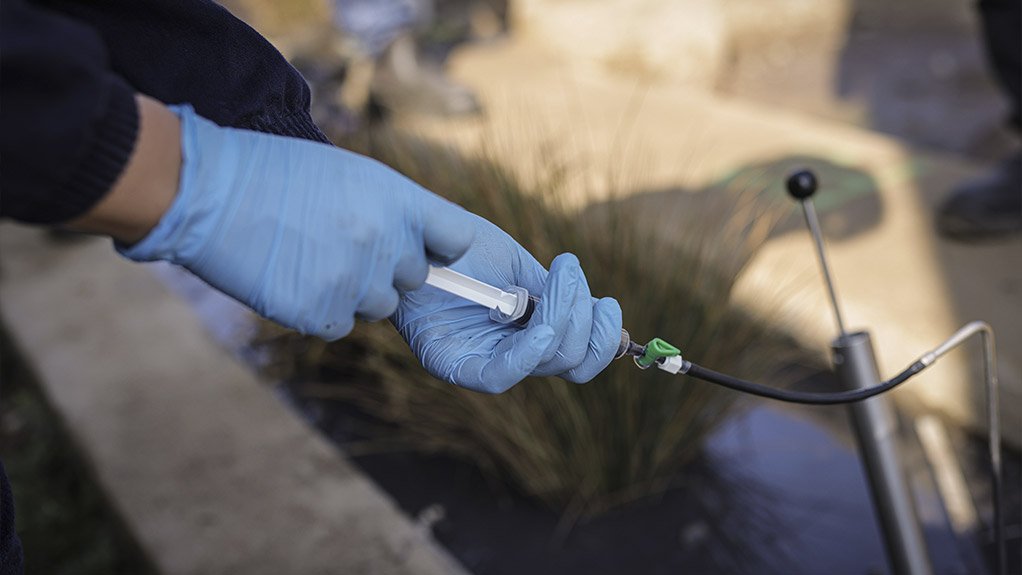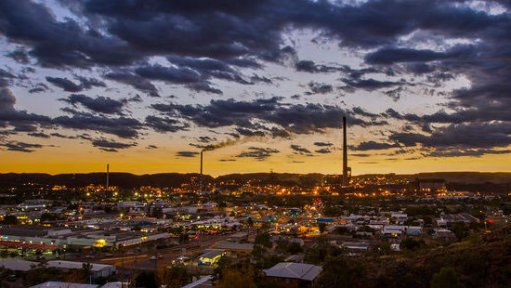Constructed wetlands to be completed by this month



CONSTRUCTED WETLANDS The wetlands are highly complex bioreactors which convert nutrients and waste products into more benign substances
PURIFY AND PLURALISE Three constructed wetlands was built in gravel-like beds to establish a microbial consortium using plants that essentially ‘eat’ chemical components in discarded wastewater
A system of three constructed wetlands (CWs) was built in gravel-like beds to establish a microbial consortium using plants that essentially ‘eat’ chemical components in discarded wastewater.
The wetlands were designed by project participants, postgraduate students and University of the Witwatersrand (Wits) staff and built in Alexandra township, in Johannesburg, by contractors, project managers and residents who live in the area.
The wetlands are – despite appearances – highly complex bioreactors which convert nutrients and waste products into more benign substances. They remove faecal coliforms, nitrates, phosphates, sulphates and chemical oxygen demand. During the process, the plants grow and provide an ecosystem support for all of these processes occurring within them.
Wits Centre in Water Research and Development (CIWaRD) director and Professor Craig Sheridan says his team chose Alexandra, “the location of this informal, unplanned settlement, within the context of a global megacity to ensure that results would be applicable to other global megacities with informal settlements”.
Plants provide microhabitats for microbes. It is an ecosystem service that the team is mimicking from a natural environment under really stressed conditions, he says.
The goal of the project was to find a way of properly treating the microbes so that they do not simply go through the process of minimal purification by themselves as they are built to do, he adds.
The team followed a two-phase approach, wherein, first, two systems were built, assessed and studied by use and efficacy, following which a redesign occurred, after which a second phase extended and revised the first two systems, with the last CW built shortly thereafter.
Sheridan explains that the reason for the redesign is owing to the fact that the CWs were not well utilised as the discharge point was poorly designed.
“We redesigned this discharge area (the feed into the wetland) to include a wash bay and this followed a human movement study to minimise difficulty of discharging buckets of wastewater into the wetland. This was so successful that the systems were no longer able to treat the wastewater since they were overloaded.”
This redesign was then studied for effectiveness and appropriateness within the context of what the township needs – which is purified water.
Through the redesign process, the team created a system that will allow individuals to use adequate amounts of water. The project results indicate that the system works, and that the team has generated design criteria.
“The design of a treatment system without accurate flow measurement is hard. Estimates may be entirely wrong and what constitutes grey water in this setting is not the same that one would find in a suburban context, hence design criteria follow on from the project.”
However, Sheridan says for the CW to ensure completely secure and clean water, scores of these systems need to be located throughout the settlement.
“The CW systems are really simple and take only a few days to construct”, but community engagement prior to construction, and follow- up research to assess effectiveness is more time-consuming, he states.
Further, an expansion project has been proposed to the Department of Science and Innovation to fine-tune the design, such as developing smart methods to understand the complexities of the feed and to develop a method for settling solids prior to entry.
This project would include the development of a local (Alexandra-based) company that would be able to market, design and build these systems for local governments.
Sheridan says increased urban populations with a lack of service delivery make the fight for clean, drinkable water challenging, adding that his team of students and researchers have coherently worked with the Alexandra community to ensure that the constructed wetlands positively impact on the area to meet its requirements.
The total budget for the project was €840 000, which included the German and Swedish funding portions, involving the building of the CWs and the social and scientific studies.
Sheridan notes that reports have been submitted to the South Africa-based funders, the Water Research Commission and the Water Joint Programming Initiative.
The project was originally scheduled to run from April 1, 2019 to March 31, 2022, but Covid-19 challenges resulted in delays. Consequently, owing to the nature of the funding, the partners’ timing in starting and completing their portions of the project also differed.
The project is set to be completed by the end of this month.
Comments
Press Office
Announcements
What's On
Subscribe to improve your user experience...
Option 1 (equivalent of R125 a month):
Receive a weekly copy of Creamer Media's Engineering News & Mining Weekly magazine
(print copy for those in South Africa and e-magazine for those outside of South Africa)
Receive daily email newsletters
Access to full search results
Access archive of magazine back copies
Access to Projects in Progress
Access to ONE Research Report of your choice in PDF format
Option 2 (equivalent of R375 a month):
All benefits from Option 1
PLUS
Access to Creamer Media's Research Channel Africa for ALL Research Reports, in PDF format, on various industrial and mining sectors
including Electricity; Water; Energy Transition; Hydrogen; Roads, Rail and Ports; Coal; Gold; Platinum; Battery Metals; etc.
Already a subscriber?
Forgotten your password?
Receive weekly copy of Creamer Media's Engineering News & Mining Weekly magazine (print copy for those in South Africa and e-magazine for those outside of South Africa)
➕
Recieve daily email newsletters
➕
Access to full search results
➕
Access archive of magazine back copies
➕
Access to Projects in Progress
➕
Access to ONE Research Report of your choice in PDF format
RESEARCH CHANNEL AFRICA
R4500 (equivalent of R375 a month)
SUBSCRIBEAll benefits from Option 1
➕
Access to Creamer Media's Research Channel Africa for ALL Research Reports on various industrial and mining sectors, in PDF format, including on:
Electricity
➕
Water
➕
Energy Transition
➕
Hydrogen
➕
Roads, Rail and Ports
➕
Coal
➕
Gold
➕
Platinum
➕
Battery Metals
➕
etc.
Receive all benefits from Option 1 or Option 2 delivered to numerous people at your company
➕
Multiple User names and Passwords for simultaneous log-ins
➕
Intranet integration access to all in your organisation




















